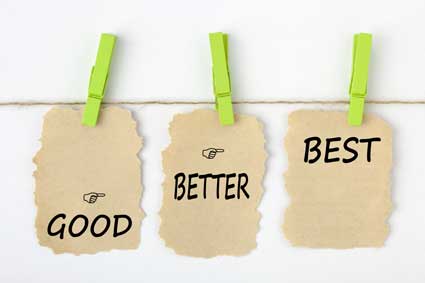Tea parties for children can be elaborate affairs involving party planners, elaborate decorations and vintage china. Professional party planners come equipped with a dress-up closet and hair and makeup accessories. However, your child's party does not have to be elaborate or expensive to have fun. When planning, keep a child's food and beverage preferences in mind, and also consider whether the parents will be attending.
A child's tea party can be a great opportunity to educate children about the proper way to hold a teacup, how to converse with guests, how to be a thoughtful host, and the basics of good table manners. If you wish to use your tea party as an educational tool, make sure to do it in a fun way. Keep the instruction brief and to the point or (depending on the age of the child) you will lose their interest quickly.
One fun way to demonstrate good table manners may be to have a special guest dress up like a princess who would show the kids how she holds her cup, how she puts her napkin in her lap, how she is careful not to slurp her tea and so on, and ask the children to do the same.
Party planning
When planning a child's tea party, carefully consider the number of children you can capably entertain. This will depend on their age, the amount of help you have, and how accustomed you are to dealing with children. For example, a third-grade teacher with several children of her own would probably be able to handle up to 25 or 30 children on her own. However, a parent who normally works with adults and has one or two very reserved children might be more comfortable hosting a group of six to seven children.
Consider whether you want the parents to stay with their children or drop them off. This will depend on the age of the kids and your comfort level. If you expect the parents to stay, make that intention clear on the invitation and when the parent responds to the invitation. If parents are staying, be sure to plan enough food and beverage (and some more adult-appropriate foods). It is bad hostess behavior to offer refreshment to children while their parents stand around hungry, thirsty, empty-handed and bored.
Food ideas
Many tea-party foods are inherently appealing to kids: cakes, cookies, sweet scones�what's not to like? Consider a child's palate when planning savory dishes. This is probably not the time to try the curried egg-salad sandwiches on 12-grain bread. Many children have very conservative palates and like familiar foods like peanut butter and jelly, ham and cheese, veggie slices, and fresh fruit.
Instead of using exotic flavors and textures (unless you know your guests are adventurous eaters), get creative with presentation. Use a set of cookie cutters to cut the crusts off bread and make fun sandwich shapes (hearts, dinosaurs, stars, and so on).
Arrange crudit� slices (pepper strips, zucchini matchsticks, carrot sticks) in disposable plastic shot glasses with a dollop of ranch dressing on the bottom for dipping.
Skewer colorful grapes, strawberries, pineapple and kiwi to make rainbow fruit kebabs.
A tea party is a fantastic opportunity to get away from overly sugary sodas and serve lightly sweetened lemonade and iced tea.
Themes
A tea party is, in itself, a theme. But you can get more specific with some kid-friendly ideas like a teddy bear tea. For this party (great for preschoolers), ask the children to bring a favorite stuffed animal with them, and then give each child the opportunity to talk about their chosen toy. This gives everyone a chance to practice their social speaking skills--and for shy children, it is easier to talk about a toy than it is to talk about themselves.
For a Princess tea party, children can come dressed as their favorite princess. You can make place cards for each guest addressing them as "Princess Grace Walker."
An Alice in Wonderland party could feature characters and decorations based on the story. The hostess could read the tale of the tea party from the book to the guests (depending on their age and attention level).
For a spa day theme (good for middle-school girls), the hostess and a few helpers could do the girls' hair, fingernails, and possibly age-appropriate makeup.
A dress-up theme is fun if you happen to have an array of fun outfits at your house--these may be old clothes like your old prom and formal dresses, and scarves, hats and purses you have picked up at thrift stores. Young girls don't need much more than a selection of interesting fabrics--they don't even have to be actual clothes, just a few yards of anything tulle, sequined, sparkly, shiny or pink and perhaps a few clothespins, and they will invent outfits of their own.
Decorations
The decorations for the party can be as simple or ornate as you like. Always consider the age of the children and the sort of treatment the decorations are likely to get: fancy vintage linens are better suited to a middle-school tea party than to a preschooler party. For the younger ones, use disposable or easily washable table coverings. If you have very small guests, consider providing child-sized tables so that everyone's feet will be able to touch the floor.
Activities
Aside from eating and enjoying one another's company, think of a fun activity the kids can do together before or after the tea. For example:
-
Dance party: Pick a selection of age-appropriate music that your child enjoys singing or dancing to, and let the kids dance.
-
Karaoke party: A karaoke machine, if you have one, is a great match for a dress-up or Diva-themed party. Once the kids get all dolled up, set them loose with the microphone and make sure you have your video camera ready. If you don't have a karaoke machine, just play their favorite music and let them sing.
-
Pottery painting: If your town has a paint-your-own-pottery store, you may be able to get a "pottery to go" kit, in which the store provides you with a set amount of unpainted pottery, paint, brushes, and everything else you need for your guests to make their own hand-painted item (for example, their very own teacup). After the party, you return the pottery to the store to be glazed and fired, and then pick it up and give the finished item to your guests.
-
Cookie decorating: You can have older children bake cookies themselves, but for the younger ones, provide premade cookies and an assortment of different-colored icings, sparkles and sprinkles for the kids to decorate their own cookies.
-
Story time: A great activity for younger elementary school and preschool kids: read aloud a favorite children's story, especially one about a tea party.
Tea Parties for Adults
Business & Networking
Tea parties work quite well as business and networking events. As with any other meeting for busy adults, however, it is important to manage time well. Be sure to have a clear agenda, a designated leader, and an effective means of keeping the meeting moving (and ending on-time).
Purpose
As the meeting organizer, part of your job is to help people mingle. You can do this by giving attendees a specific objective in exchange for a tangible reward. The reward can be simple--like entry into a drawing for a door prize, free admission to the next event, or a small gift certificate from a popular coffee shop. As soon as there is some external incentive for a desired behavior, people become engaged very quickly. Following are a few examples of networking icebreakers:
-
At the beginning of the meeting, ask attendees to meet at least three people they have not spoken to before, collect their business cards, and during the program portion of the meeting, give them the opportunity to introduce one person they just met to the assembled group in 30 seconds or less.
-
Provide attendees with a treasure-hunt card that asks them to find (and write down the names and business names of) people who have certain traits. For example:
Find someone who just started selling auto insurance this year. Name/Business.
Find someone whose oldest child graduated from college last year. Name/Business.
Find someone who is not planning to retire within the next three years. Name/Business.
Aside from incentive-based games, you can also organize your tea as a speed-networking event, in which people sit together at small tables (no more than four per table), for a short period of time (no ore than five minutes) before rotating and moving to other tables.
A simple and less game-like way to get people to mingle is to assign seats at tables--making an effort not to put people from the same organization or department at the same table.
Getting Attendees
One of the most difficult aspects of hosting a networking meeting is getting people to go--especially for a new organization that doesn't already have an established base. To make your meeting successful, you will need to recruit top-level business people who your attendees will want to meet. For example, if you would like to hold a networking meeting for fitness professionals in Fredericksburg, Virginia, the first step is making sure you have top-level hiring managers from the most popular health clubs, the managers of wellness programs from big corporations in your area, and so on.
Once your "stars" have committed to attend and possibly speak, make sure you promote the fact that they will be there either on the invitation or verbally, when you invite people.
Providing door prizes can also encourage people to attend a networking event. As attendees come in the door, ask them to place their business cards in a fish bowl. Draw one card for each prize. Prized may be things you purchase as the organizer, or they can be donations from attending organizations.
Sample agenda
As mentioned previously, working adults are very busy, and keeping to a timetable shows respect for their time. Meetings should not last longer than an hour and a half, but an hour is even better. Here is a sample networking tea timetable.
-
5:00pm: Start time. Buffet-style tea and coffee service is ready. Teatime treats are ready.
-
5:00-5:15: Attendees arrive, casual networking.
-
5:15-5:20: Organizer welcomes guests, invites them get their food and tea, and to take their seats at tables.
-
5:20-5:35: Program portion of the event. Options:
Guests introduce themselves and briefly describe their business.
Formal speaker gives his/her presentation.
-
5:35-6pm: Casual networking, games, door prize drawings, and so on.
-
6pm: Conclusion
Other tea parties for adults
Tea parties make excellent gatherings for sorority events (parents weekend, Mother's Day, and faculty mixers). They are also an ideal fit for bridal showers, engagement parties, baby showers, birthday parties and fundraisers.
Fundraiser Tea
To turn your tea into a fundraiser, consider charging attendees for admission. In order to get people to pay to go, you will have to provide some sort of entertainment or opportunity they wouldn't get otherwise. For example:
-
Ask the local high school jazz band to perform for half an hour
-
Ask a professional DJ to donate his or her services to play music for your event
-
Find a professional dance instructor who is willing to donate a one-time introductory dance lesson for your attendees.
-
Provide an "Open-Mike Night" and recruit talented local singers, dancers, and musicians to perform as a donation for your event.
-
Ask local businesses to donate items for a silent auction.
-
Find a photographer who can donate his or her time to take portraits of attendees at the event.

























